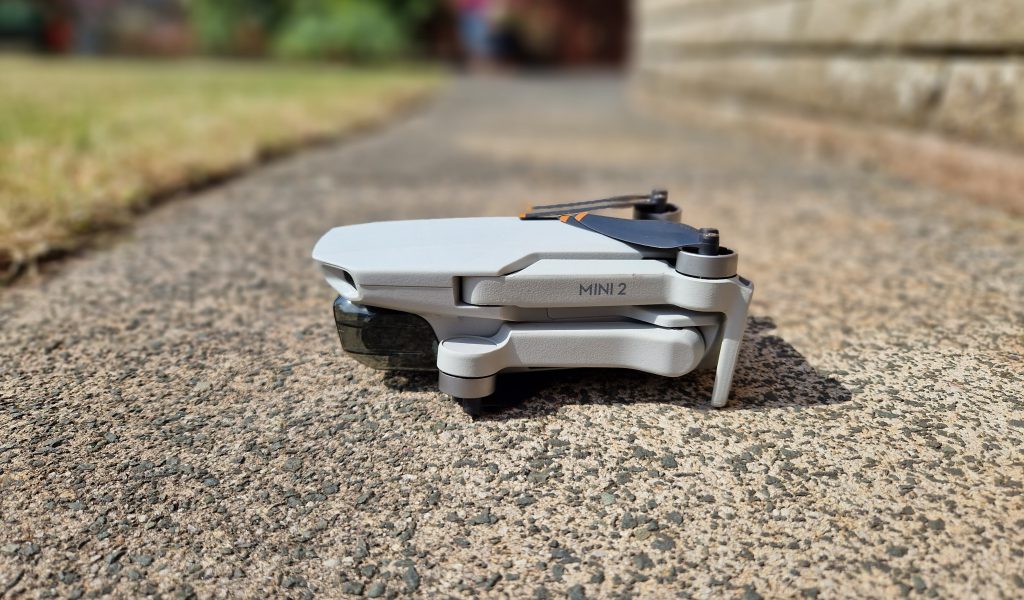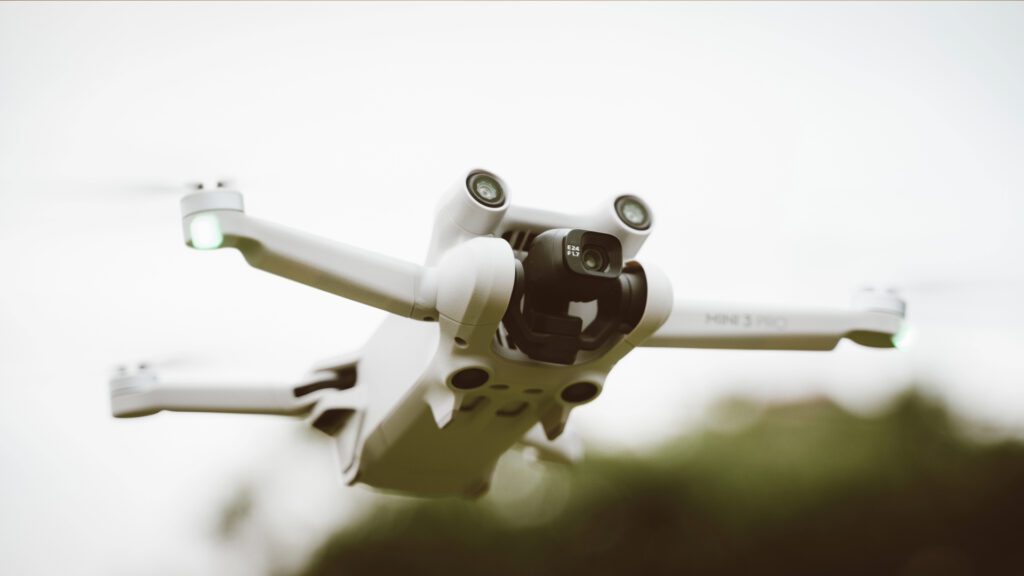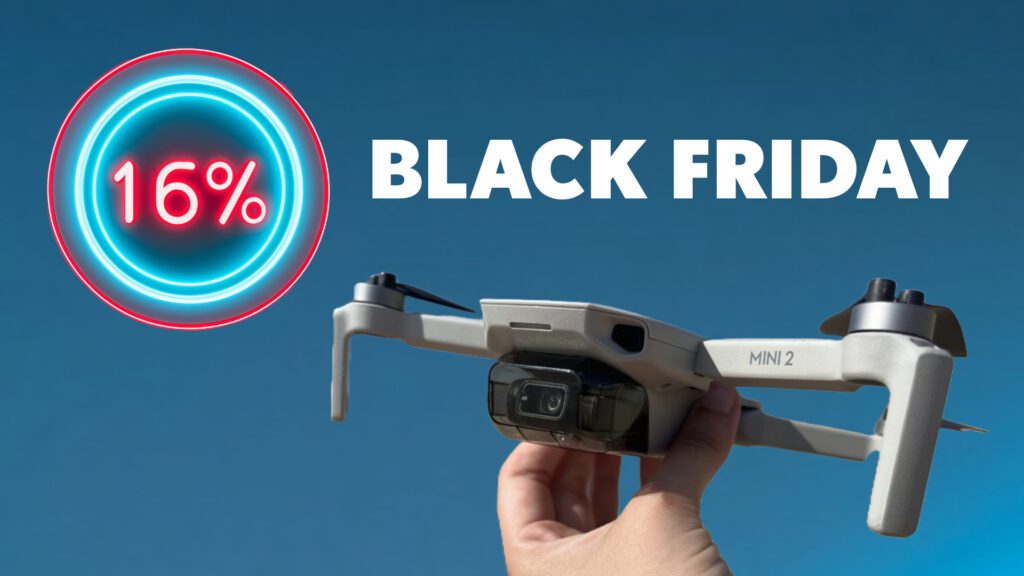Like any investment or hobby, it’s important to do your research before you commit to a purchase. Drone shopping is no different.
Choosing the type of drone
Drones come in a wide range of prices, depending on their features, capabilities, and intended use.
Entry-level hobbyist drones can cost anywhere from $50 to $500, offering basic functionality and limited camera capabilities. Mid-range drones typically range from $500 to $1,500 and often provide better cameras, longer flight times, and more advanced features. Professional-grade drones can start from $1,500 and go up to several thousand dollars, catering to photographers, filmmakers, surveyors, and other specialised applications.
Check out why the DJI Mini 2 is still the best beginner drone in 2023.
When considering which drone to buy, there are two important questions you should ask yourself.
First, what do you intend to use the drone for? Whether it’s recreational flying, aerial photography, racing, or professional applications, knowing your primary purpose will help narrow down the options. Second, what features do you want to prioritise? Consider aspects such as camera quality, flight time, and user-friendly controls.
By answering these questions, you can better identify the drone that aligns with your specific needs and desired price range.
Check out the top beginner drones to kickstart your droning hobby in 2023.
As a beginner, and avoiding crossing any federal drone regulation laws, your best bet is to choose a drone that’s under 250 grams. Drones under 250 g do not need to be registered with the FAA.
If you are based in the UK, you do need to register for an Operator ID with the Civil Aviation Authority (CAA) before you fly your drone – regardless of whether your drone is under 250 g. Currently, this cost stands at £10.33. However, anyone wishing to fly the drone that is not the owner, i.e. one of your family or friends, needs to obtain a Flyer ID which is free of charge.
Both of these can be obtained on the CAA website.
Please note, these drone regulations are subject to change at any point, so make sure to keep updated.
Extra costs
When purchasing a drone, it’s important to consider additional costs beyond the initial purchase price. This can vary depending on whether you want a ready-to-fly drone or DIY drone. For the purpose of this topic, this will only cover costs for ready-to-fly drones.
Two important factors to keep in mind are editing software and insurance.
Drone insurance
Typically, I’m not one to opt for insurance when it comes to tech products as I believe with care and caution, one can avoid the need for it. However, drones can be very easy to crash or damage. And they can be VERY expensive to repair.
DJI offer repair and replacement services in their DJI Refresh Plan for up to two years. This can be activated easily once the drone is turned on for the first time. You then have 48 hours to activate your insurance. However, after this period, purchasing insurance can take a few more tedious steps.
The cost of insurance will depend on factors such as the drone’s value, intended use, coverage options, and deductibles. It’s advisable to research insurance providers that offer specialised drone insurance and obtain quotes to understand the associated costs.
Editing Software
If you plan to engage in aerial photography or videography, you may need to invest in editing software to enhance and refine your captured footage.
While some basic editing software options are available for free, more advanced software packages often come at an additional cost. Software like Adobe Premiere Pro or Final Cut Pro offer robust editing capabilities, including colour grading, special effects, and advanced editing tools. The cost of editing software can vary depending on the specific package or subscription plan you choose, so it’s worth factoring these expenses into your budget.
Storage
If you are wanting to take photos or shoot videos with your drone, the best way to get the best quality is by purchasing an SD card.
It’s worth noting that not all drones require an SD card for this. For example, the DJI Mini 2 can still take photos and record videos without an SD inserted, as it stores them on the DJI App (and if your phone if you so choose). However, the footage captured will be of a lower resolution than if it was stored on the SD card.
How do you know which SD card is best for which drone? Unless the drone explicitly specifies the compatible SD card type, it is advisable to seek cards with a U3 or V30 rating, indicating a sequential write speed of 30 MB/s. This speed is particularly beneficial for capturing and storing 4K video footage.
Sticking with big names like Sandisk and Samsung is your best bet in knowing that the micro SD card is going to be of good quality and store what you need.
You’ll also want to consider the read and the write speed of the card.
Read more about the best SD cards for DJI drones.
Learn the basics
Like with any hobby, it’s important to get used to the basics before you fly. When you’re new to the hobby and device, it’s easy to want to fly the drone as far and as high as possible. Please… don’t do this.
Learning the basics before buying a drone is crucial as it can help you to understand the fundamentals of drone operation, including flight controls, safety protocols, and regulations, ensuring a safer and more responsible flying experience. It allows you to navigate confidently, minimise the risk of accidents, and respect airspace restrictions.
One rule, for example, is never to let your drone fly out of your sight, as you risk losing control and potentially crashing or losing the drone.
Acquiring basic knowledge beforehand enables you to fully utilise the functionalities of your drone when you start flying, such as camera controls, flight modes, and intelligent flight features. Whether through online tutorials or classes, investing time in learning the basics prepares you for a successful drone flying journey.
Check out our top drone flying simulators in 2023.
Regulatory guidelines and laws
Registering your drone
As drone usage continues to grow, many countries have implemented registration requirements and regulations to ensure safe and controlled operations. By registering your drone, you comply with legal obligations and airspace safety.
However, it’s important to note that drone regulations vary between countries, with each nation having its own set of rules regarding drone registration, flight restrictions, and operational guidelines. Familiarising yourself with the drone regulations specific to your country is crucial to avoid any legal issues.
Flying your drone
Familiarise yourself with the regulatory guidelines and laws specific to your location. These regulations can vary from one region to another. Take the time to understand what is permissible and what is not when it comes to drone flying.
Knowing the do’s and don’ts will ensure that you fly your drone in compliance with the law and maintain a safe and responsible approach to drone operations.
Learn about controlled airspaces and restricted zones. The Drone Assist App is useful for determining what airspace restrictions are around you.
For places in the UK to fly your drone, check out: the Drone Scene.
Be considerate
Although more and more people are joining the drone community, some people still have concerns about it. One of the main worries is about privacy.
So, before you buy a drone, it’s important to remember to be considerate when you fly it. This means being responsible and respectful. It’s all about being mindful of people’s privacy and making sure you fly your drone in a way that doesn’t cause problems or make others uncomfortable. By doing this, you can help show others that drones can be used in a good way.
For example, if you want to practise flying your drone in your own garden, make sure not to hover around your neighbours’ back gardens or do anything that would raise one too many questions.
Respect the privacy of others by avoiding flying over private property without permission and refraining from capturing footage or images of individuals without their consent. Also, be aware of your surroundings, avoid overly crowded areas, and be considerate of public spaces, events, and gatherings.
Conclusion
Now you have considered all the important factors before buying a drone, it is crucial to approach your drone flying journey with caution and responsibility.
Adhere to the regulations, prioritise safety, and respect the privacy and concerns of others. With all that said, don’t forget to have fun flying a drone. Enjoy the chance to explore the skies from a special viewpoint that is different from what most people usually see.
Happy flying!




